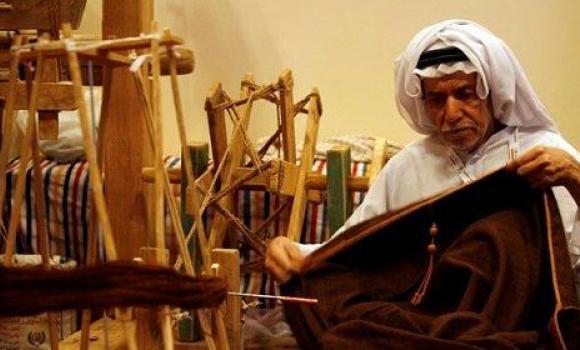
Unique representation to highlight KSA’s rich culture
In a unique opportunity to promote local arts and culture, five Saudi artists representing the cities of Al-Ahsa, Dammam, Hail, Jeddah and Al-Jouf are participating in the first GCC handicrafts exhibition that began in Doha, Qatar on Tuesday.
These artists will cover five major crafts widespread across the Kingdom, including Al-Sido, sewing Bisht, carpentry, Arabic calligraphy and wooden boat manufacturing.
“The exhibition will be inaugurated jointly today [Tuesday] by the tourism ministers and top officials responsible for tourism in the GCC,” according to a spokesman at the National Handicraft Program “Bari,” which is facilitating the participation of Saudi artisans in the maiden GCC art gallery, and providing them with necessary facilities and support to enable them to highlight the cultural depth of the Kingdom.
“The selective artisans representing the Kingdom will highlight effective and tangible achievements of Saudi Arabia in the fields art and handicrafts,” the official added.
This handicrafts exhibition is being held under the theme “Stretching the fabric of our culture,” the official informed.
He further noted that the unique participation aims to highlight the potential of the Kingdom in arts and handicrafts as it attaches great importance to the achievement of sustainable development in handicrafts, culturally and economically, based on the belief that handicrafts are a national treasure that reflects its cultural identity and national originality.
“Moreover, it is an area for job creation for different classes of Saudi society,” the official underlined.
He further stated that the five-day event coincides with the second meeting of the GCC tourism ministers to enhance cooperation in the sector for further betterment in the Gulf region tourism sector.
Notably, Bari is a flagship program of the Saudi Commission for Tourism and National Heritage to promote and highlight the works of creative artisans and recognize their efforts in the arts and handicrafts field.
There are a number of criteria Bari took into consideration for approval which include: the handicraft product should be made using local raw materials; in addition to artisans being able to work in front of the public, they should exhibit precision, innovation and creativity in the product output; the product must be compatible with market demand; and most importantly, the product must link with the authenticity of the Kingdom’s heritage so that it promotes arts and crafts in the Kingdom along with heritage tourism.



























